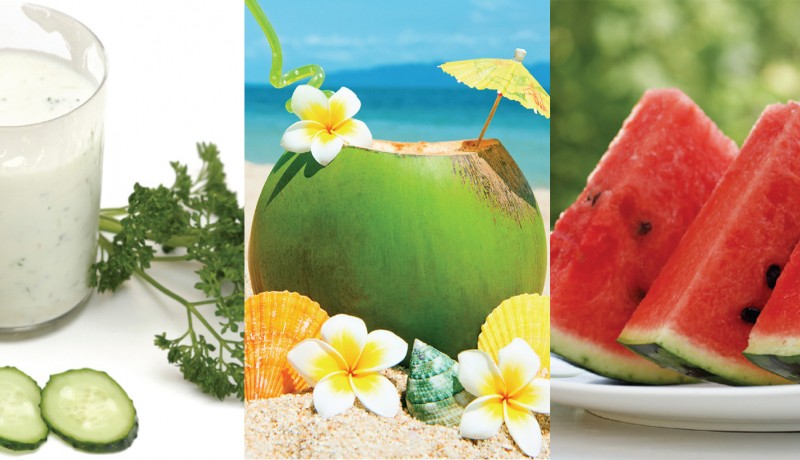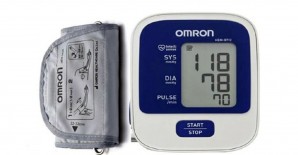
Health

Wellness consultant Naini Setalvad prescribes a cooling diet for the summer
When temperatures soar, energy levels drop. In summer, we become susceptible to troubles such as heat stroke and diarrhoea that cause major electrolyte losses. Once the electrolyte balance drops, the body feels weak and reaches out for sugary drinks. However, electrolyte loss can be replenished with foods that are high in water content as well as natural salt and sugar. As the temperature sizzles, the body needs cooling—internal and external. Traditional Indian physicians used to categorise foods as heating or cooling foods and many people in India still follow this. The best way is to eat according to the seasons, as nature has its reasons! Unfortunately, ‘modern’ thinking often eschews these principles, leading to an imbalance in energy chakras and causing lethargy and diseases.
Change your dietary habits
To manage imbalance in chakras and prevent the body from summer ailments, it’s important to make some changes in your food habits. Eat what is naturally available in the summer. During summer, the body loses a lot of water through sweat, causing dehydration. So drink enough water to cool your body. In fact, water is the first thing you should ingest when you wake up, and you must drink it throughout the day as well. While cooling your body, it is also your basic medium of transport for everything, from vitamins and minerals to all bodily nutrients.
Add fruits to your diet
Fruits like watermelon and mango are perfect for the summer. Both fruits are delectable, refreshing and satisfy your sweet cravings. Watermelons are not only a great pick-me-up on a hot summer day but thirst-quenchers as they are packed with some of the most important antioxidants in nature. What’s more, their calorie content is almost negligible. A good serving of chilled watermelon is the perfect way to beat the summer heat and boost your immunity. Melons, or cantaloupes, are also known to be among the most cooling fruits. In addition to this, the seeds of the melon are able to clear phlegm and benefit the intestines.
Synonymous with summer, the mango is the most misunderstood fruit! It is available exclusively in summer for a reason. Extremely healthy with zero fat, mangoes are rich in Vitamin C, beta-carotene, natural sugar and fibre. The deep orange colour indicates how rich they are in Vitamin A too. They keep you fuller for longer and prevent constipation.
You can also add black jamun to your diet in summer and lychee towards the end of the season.
Boost your fluid intake
Switch to green tea or herbal tea for your daily dose of caffeine. Green tea contains a plethora of antioxidants. In between, keep yourself revived with lemon water with a dash of rock salt and roasted and ground cumin (jeera) seeds. With their high Vitamin C content, lemons strengthen the immune system and prevent heat stroke. Also, they are alkaline on digesting, thus being a great acidity-counter. You could also opt for coconut water, which, owing to its high potassium, natural electrolytes and mineral content, replenishes the minerals that get lost during perspiration. In fact, coconut water is considered a wonder food and called the ‘fluid of life’. An oral rehydration medium, it is instantaneously refreshing, subtly sweet, keeps the body cool and contains a host of minerals that are excellent for the hair and skin. Further, application of coconut water on the body prevents prickly heat and boils and gets heat rashes to subside.
Whip up some buttermilk with yoghurt, mint, coriander, ginger, roasted cumin powder and salt mixed with chilled water—it’s a fab desi way to cool your body this season. The bacterium in yoghurt helps make valuable B vitamins, protein, calcium and phosphorous that are more easily absorbed by the digestive system. Those who suffer irritable bowel syndrome (IBS), a common ailment in summer, can have yoghurt to soothe the stomach. It is also a good cure for summer diarrhoea. In addition, as sweating causes a lot of mineral loss, rock salt will help.
Choose the right foods
Remember to start your meals with a fresh salad—finely chopped or grated, so it is easy to chew and digest. This will, again, keep the water content high in your body. Cut up some tomatoes, cucumbers and onions and garnish with lemon juice. Cucumbers contain 90 per cent water and zero per cent fat. Tomatoes are natural antioxidants, high in water content with zero fat. And onions are famously known for their cooling property. Combine these with roti, rice, buttermilk and dal for added benefits to the body.
While salads are important, you need your share of cooked vegetables as well. You can have the entire gourd family—from white gourd and pumpkin to snake gourd and bitter gourd—in summer. Gourds are excellent for heart health, good for diabetics and light on the digestive system. Their fibre content helps in digestion and they cool the body too. Some also have anti-malarial and anti-viral properties.
Make your curries interesting with kokum. It is a cooling agent and lends a tangy taste to your meals. Cumin seed is another condiment added to nearly everything, including salads, vegetables, buttermilk, yoghurt and fruits. It lends a yummy taste and flavour to the dish is extremely refreshing in summer.
For an evening snack, you could eat a fruit. Go for a raw mango as it contains Vitamin C and protects the body against sunstroke. For a salty snack, slice up some raw mango, sprinkle chilli powder on top and munch! Those with a sweet tooth can enjoy a glass of aam panna, a traditional drink made out of raw mango, jaggery and rock salt.
The no-no foods
Avoid bajra in summer as a form of grain and switch to jowar, rice and wheat instead. Also avoid heat-producing nuts, seeds and oils such as mustard and sesame. Last, avoid fried eggs, red meats and creamy gravies; opt for lightly sautéed foods.
COOLING RECIPES
WATERMELON SOUP
Serves: 4; preparation time: 15 minutes
This is an interesting twist to the refreshing fruit that is sure to entice your taste buds.
Ingredients
- Watermelon: 250 gm; cut into cubes
- Red chilli powder: 1 tsp
- Garam masala: 1 tsp
- Curry leaves: 4-5
- Ghee: ½ tsp
- Salt to taste
Method
Blend the watermelon cubes in a blender to make juice. Strain to remove seeds. Heat ghee in a wok. Sauté the curry leaves with red chilli powder. Add the watermelon juice. Then add the garam masala and salt. Cook for 5 minutes and serve hot.
PUMPKIN RAITA
Serves: 4; preparation time: 10 minutes
Pumpkin raita is cold, flavoursome and filling—and the best way to get someone to eat pumpkin!
Ingredients
- Pumpkin: 150 gm; boiled
- Low-fat yoghurt: 300 gm
- Cumin powder: ¼ tsp
- Green chilli (optional): 1; finely chopped
- Salt to taste
Method
Mash the boiled pumpkin. Add it to preheated yoghurt. Add salt, chilli and jeera powder. Mix it well and serve chilled.
TEMPERED YOGHURT
Serves: 4: preparation time: 5 minutes
This is a perfect accompaniment to a bowl of masala pulao.
Ingredients
- Low-fat yoghurt: 400 gm
- Cumin and coriander powder: 1 tsp
- Red chilli powder: ½ tsp
- Mustard seeds: ½ tsp
- Cumin seeds: ¼ tsp
- Cow’s ghee: 1 tsp
- Coriander leaves: ¼ cup; finely chopped
- Salt to taste
Method
Beat the yoghurt and add salt to it. Heat cow’s ghee in a wok. Add mustard and cumin seeds. As it starts crackling, add red chilli powder and cumin-coriander powder. Pour this mix in the salted yoghurt. Garnish with coriander leaves and serve.
Setalvad is an obesity and lifestyle disease consultant who offers diet counselling at Health for You, a wellness clinic in Mumbai, as well as online. Visit www.nainisetalvad.comfor more details or write to contact.mag@harmonyindia.org if you have any queries for her
Photos: 123RF.com Featured in Harmony — Celebrate Age Magazine May 2017
you may also like to read
-
Hot tea!
If you enjoy sipping on that steaming hot cup of tea, think twice. New research establishes a link between drinking….
-
Weight and watch
If you have stayed away from lifting weights at the gym, thinking it might not be a good idea for….
-
Toothy truth
Research has established a clear association between cognitive function and tooth loss when cognitive function score was categorised into quintiles…..
-
PRODUCT OF THE MONTH
Automatic Blood Pressure Monitor Measure your blood pressure and pulse rate with no fuss Hypertension, or high blood pressure, could….







